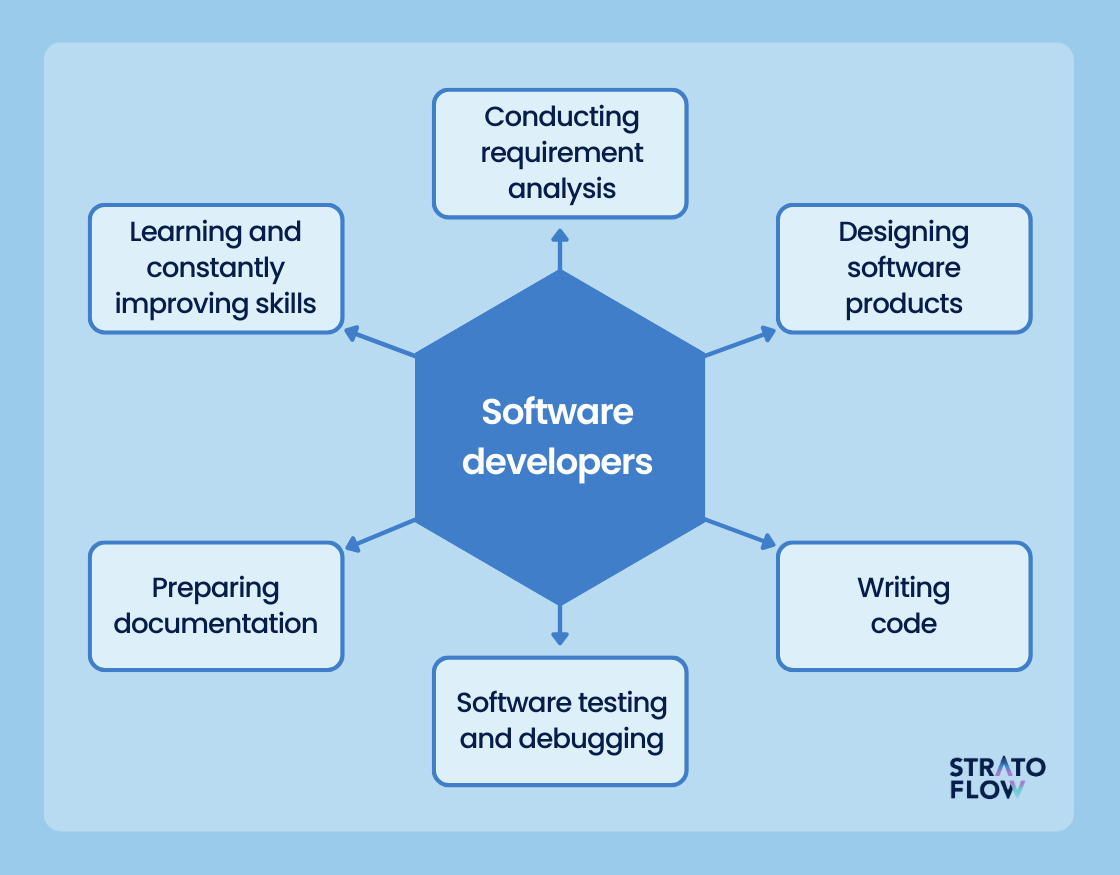Building Success with a Dedicated Development Team for Your Company Requirements
Building Success with a Dedicated Development Team for Your Company Requirements
Blog Article
Committed Developers vs. In-House Teams: Which Is Right for You?
The decision between making use of committed developers and maintaining an in-house group is a substantial one that can impact the trajectory of your tasks and total business approach. Conversely, in-house teams add to a natural company culture and a nuanced understanding of lasting objectives.
Understanding Devoted Designers
The growing need for specialized skills in the tech market has brought about the development of dedicated designers as a feasible option for several companies. These experts are typically contracted on a project basis, enabling business to utilize particular expertise without the long-term commitment connected with permanent hires. Devoted developers are commonly embedded within a customer's team, supplying flexibility and scalability to fulfill job demands.
This model allows companies to access a global skill pool, which is especially helpful in a rapidly advancing technical landscape. Committed developers can be sourced from different geographical areas, making certain that companies can locate the best ability established at competitive prices. They typically bring a riches of experience and expertise, having worked with varied projects throughout various markets.
Furthermore, specialized programmers can concentrate exclusively on the jobs available, improving efficiency and performance. They are furnished to integrate flawlessly into existing workflows, collaborating very closely with in-house groups to accomplish project goals. This technique not only lowers the concern of employment and training but likewise allows companies to remain agile, adapting rapidly to transforming market demands and technical innovations.
Benefits of In-House Teams

In addition, internal groups often tend to have a much deeper understanding of the business's objective, worths, and objectives. This alignment can enhance worker involvement and motivation, as employee really feel more linked to their work and the company's success. In addition, having a committed in-house group permits better placement of methods and objectives, as these members are consistently concentrated on the business's top priorities.
In-house groups also assist in quicker decision-making processes, as they can react more swiftly to modifications and challenges. The well established partnerships and familiarity with business protocols enable streamlined operations and lowered miscommunication. Eventually, the mix of a natural culture, placement with business objectives, and reliable interaction makes internal groups a useful possession for numerous organizations, specifically those looking to cultivate long-term development and development.
Expense Considerations
When examining price factors to consider, both in-house teams and devoted designers existing distinctive financial ramifications for companies. Involving specialized designers typically entails a pay-per-project or hourly rate design, which can be economical for organizations with changing task needs. This approach enables versatility in scaling sources up or down, making certain that firms only spend for the solutions they require.
On the other hand, in-house teams entail dealt with costs, including wages, benefits, and overhead costs such as office and devices. While this model provides higher control and prompt schedule of resources, it may cause greater lasting expenditures, particularly if the workload does not validate a full time team.
Moreover, companies should think about the hidden costs connected with employment and training of internal staff members, which can even more stress spending plans. Sometimes, the moment and iot software development company resources invested on managing an in-house team can interfere with the organization's core service goals.

Project Management and Adaptability
Task administration and adaptability are crucial factors that affect the option in between internal teams and committed designers. Dedicated teams commonly have actually developed procedures for managing jobs efficiently, leveraging specific methods like Agile or Scrum, which assist in iterative development and versatility.

Inevitably, the selection in between internal groups and her comment is here dedicated designers rests on the preferred degree of versatility and the details project management demands. Business need to assess their operational characteristics, task intricacy, and source schedule to establish which choice lines up best with their calculated purposes.
Making the Right Option
Picking the best growth strategy-- committed programmers or internal groups-- needs a cautious analysis of different variables that straighten with a company's calculated objectives. Alternatively, in-house groups can give far better connection and integration with existing workers.
Following, evaluate your budget plan. Committed developers usually present an economical solution for short-term jobs, while internal teams might sustain greater long-term expenses due to incomes, advantages, and expenses expenses. Analyze the level of control and collaboration preferred; in-house teams normally cultivate more famous e commerce sites powerful interaction and placement with firm society.
If instant outcomes are required, devoted programmers can be onboarded swiftly, whereas developing an in-house group takes time for recruitment and training. If constant advancement is vital, spending in an in-house group might generate better returns over time.
Final Thought
Finally, the choice in between internal teams and devoted designers hinges on job requirements and business goals. Dedicated designers offer adaptability and specialized proficiency, making them suitable for temporary campaigns. Conversely, in-house teams grow a cohesive culture and deeper alignment with lasting goals. Cautious evaluation of spending plan restrictions, job timelines, and desired control degrees is essential for determining the most appropriate method, making sure placement with tactical top priorities and functional performance.
The decision between using devoted developers and maintaining an in-house team is a significant one that can influence the trajectory of your projects and overall business strategy.Task monitoring and versatility are critical factors that affect the choice between committed programmers and internal teams. software development staff augmentation.In comparison, internal teams might excel in preserving a regular task management structure due to their experience with the company's culture and long-term objectives. Committed developers frequently present a cost-effective option for short-term jobs, while in-house teams may sustain higher lasting costs due to wages, benefits, and expenses costs.In final thought, the choice in between in-house teams and committed programmers hinges on task needs and organizational purposes
Report this page